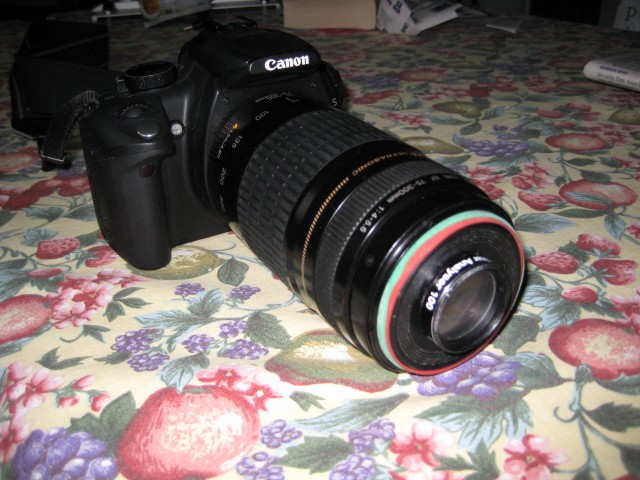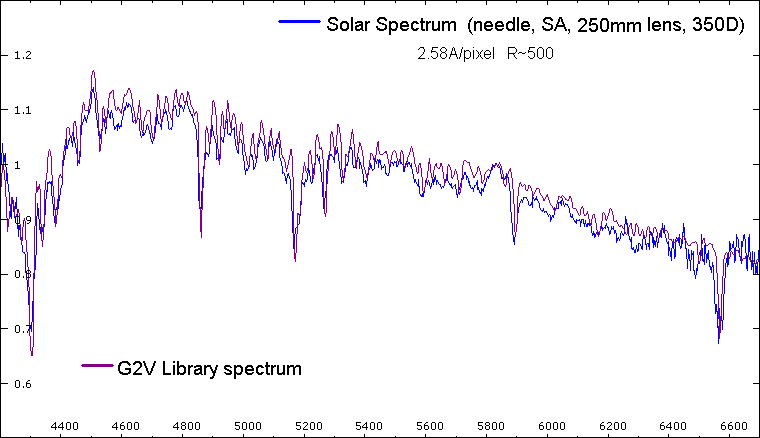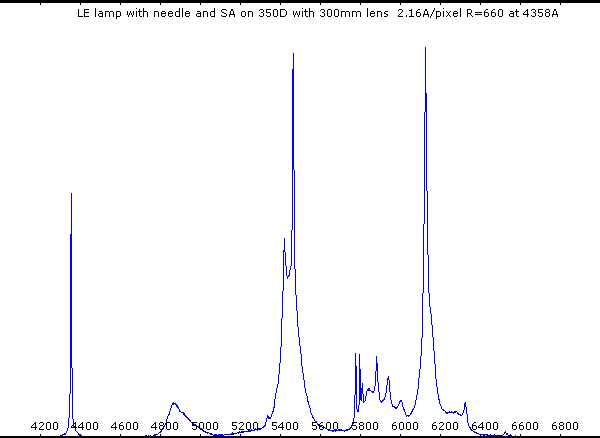
SPECTROSCOPY
RETURN TO SPECTROSCOPY INTRODUCTION
Imaging spectra of the Sun and other bright extended sources
using a Star Analyser and a digital camera
The Star Analyser grating is mounted in front of the camera lens. The dispersion (length of the spectrum) depends on the focal length of the lens. A telephoto lens (or zoom lens on maximum zoom) works best.
(Click here
for details of how the same arrangement can be used to
take spectra of bright
stars without
even using a
telescope.)

The reflection from a needle is used as the light source. (A smaller diameter needle gives a sharper light source and a higher resolution spectrum.) The spectrum is imaged from a distance of typically 2-3m (The greater the distance, the narrower the source appears so the resolution is higher)
Here you can see the needle on the left with the sun glinting off it and the spectrum produced to the right. Several Fraunhofer lines are visible. Note a dark background is needed (for example a piece of black card) in the region where the spectrum falls.

This image was taken using a DSLR and a zoom lens at 250mm focal length
The spectrum image can be converted into a digital graph (below), here using Visual Spec software, though other software packages such as Rspec or ISIS can be used.

Note the close
agreement with the standard spectrum of a G2V type
star. Click here for details of how to
process (reduce) these type of spectrum images and how the
same arrangement of a
Star
Analyser
mounted in front of a
camera
can be used to
take
spectra
of bright
stars
without
even using a
telescope.
Other bright extended light sources can also be recorded using the same setup.

This is the spectrum of a low energy light bulb, shown as a fully calibrated digital spectrum below.
